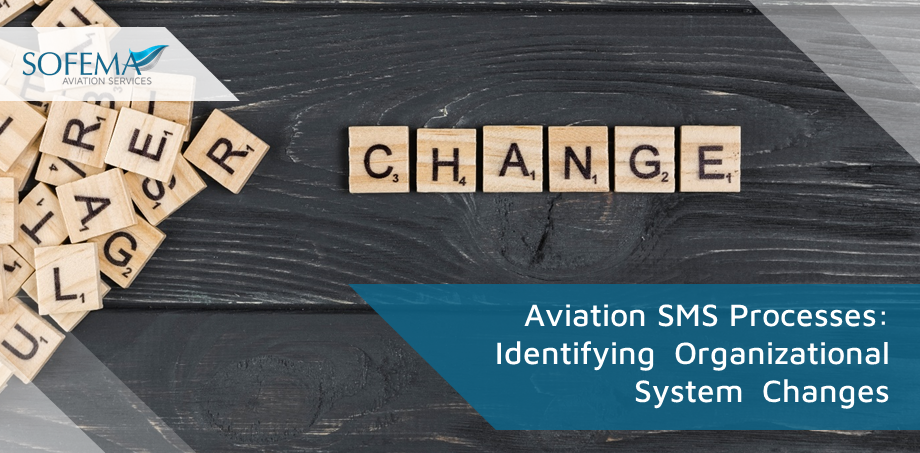Sofema Aviation Services (SAS) www.sassofia.com considers the Aviation SMS Processes to ensure our ability to identify Organizational System changes.
To ensure that changes throughout the organizational system are identified and managed effectively. Any changes in the organization, its operations, or the environment in which it operates should be managed in a way that safety risks are assessed and mitigated.
The organization’s top management must actively support and be committed to safety, establishing a clear safety policy. Together with clearly defined roles and responsibilities for safety at all levels within the organization.
Several key processes and elements are involved:
- Establishment of a Safety Policy: This is a formal declaration of the organization’s commitment to safety, which should be communicated throughout the organization.
- Setting Safety Objectives: Clear, measurable objectives aligned with the safety policy help in guiding the organization’s safety efforts.
- Hazard Identification: Continuous identification of existing and potential hazards is crucial. This can be achieved through various means such as safety reports, audits, and flight data monitoring.
- Risk Assessment and Mitigation: Once hazards are identified, assess the risks associated with them and implement measures to mitigate these risks to an acceptable level.
- Safety Performance Monitoring and Measurement: This involves the collection and analysis of data to monitor the performance of safety measures.
- Continuous Improvement of the SMS: Based on the performance monitoring, the SMS should be continuously reviewed and improved.
- Training and Education: Ensuring that all personnel are trained and competent in safety-related duties.
- Safety Communication: Effective communication across all levels of the organization regarding safety issues, changes, and performance.
Specific Management of Change Drivers
Each of the following elements and aspects adds value to the process by ensuring a proactive, systematic approach to safety management, which is essential in the dynamic and complex environment of aviation.
- Recognizing changes in the operational environment, technology, and organizational structure.
- Evaluating how these changes impact safety and what new risks they might introduce.
- Safely implementing changes while ensuring that all safety measures are adapted accordingly.
- Open and effective communication across all levels of the organization regarding safety issues and performance.
- Continuous monitoring of safety performance, including the effectiveness of safety risk controls
- Developing and maintaining plans for potential emergency situations.
o Ensuring that these plans are effective and current.
- Keeping records of all safety-related information, including training records, safety reports, and risk assessments.
- Using data to identify trends and areas for improvement in the safety management system.
- Ensure compliance with safety policies and regulations and identify areas for improvement.
- Senior management should regularly review safety performance and the effectiveness of the SMS.
- Regular external audits to ensure compliance with EASA and other relevant safety regulations.
- Employees should be encouraged to report safety concerns without fear of retribution.
o Employees at all levels should be involved in the safety management process.
Next Steps
Follow this link to our Library to find & download related documents for Free.
Sofema Aviation Services (www.sassofia.com) and Sofema Online (www.sofemaonline.com) provide multiple Safety Management System courses including Classroom, Webinar and Online – for additional guidance please see the respective websites or email team@sassofia.com
Tags:
Aviation SMS, EASA compliant, Hazard Identification, Management of Change (MOC), Measuring Safety Performance, Mitigation, Organizational System, Risk Assessment, Safety Communication Considerations, Safety Objectives, Safety Policy, Safety Risks, SAS blogs




